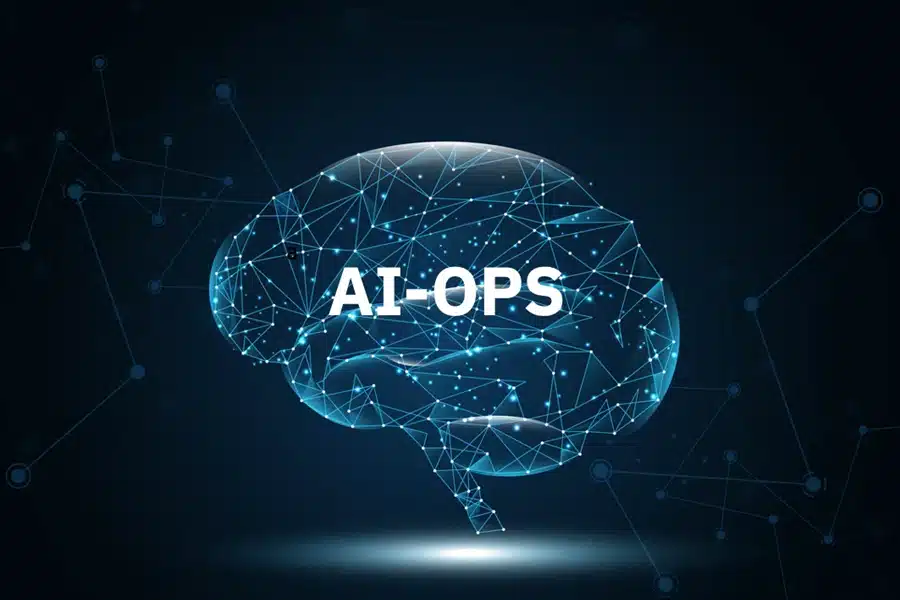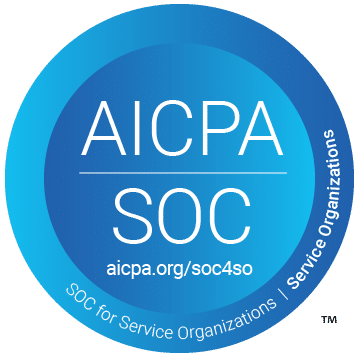Related Resources
As generative AI reshapes the competitive landscape, having a strong data foundation is no longer optional — it's a strategic imperative. According to a recent report by MIT Technology Review Insights in partnership with Snowflake, businesses that lack a solid data strategy risk falling behind in the race to innovate.
This is especially true when it comes to implementing AI for lead generation strategy, where success hinges on clean, connected, and actionable data. Today, we are going to explore how to build a modern lead pipeline that blends traditional tactics with AI-powered innovation. If you've ever wondered how AI for lead generation can elevate your efforts, read on!
The Evolution of Lead Generation Strategy
When it comes to attracting customers, new innovative marketing strategies are becoming essential to cut through the noise. Similarly, your lead generation strategies also need to evolve to evoke customers' interest in your offerings.
A sound lead generation strategy typically follows five stages:
- Attract – draw in a relevant audience via valuable content
- Capture – collect prospects' info through CTAs and forms
- Nurture – guide buyers with targeted follow-up
- Qualify – score leads based on behavior or fit
- Convert – move qualified leads into deals
HubSpot emphasizes this funnel: it starts with compelling content ("rocks") supported by tactical elements ("pebbles") and fine details ("sand") to fill your pipeline effectively. A solid foundation of valuable content unlocks greater conversion potential.
How AI Transforms Each Stage of the Lead Generation Funnel
With the advancement of AI in business, you now have the opportunity to optimize every stage of the lead generation funnel and automate your workflows to capture, engage and nurture prospects. Below is a brief overview of how AI for lead generation can enhance your efforts at every stage of the funnel.
- Attract & Capture: AI boosts SEO performance and installs smart chatbots or dynamic popups, improving targeting and form conversion. For example, AI‑powered exit‑intent popups can surface tailored offers or customer reviews at the right exit moment.
- Nurture: AI fueling multi-channel retargeting, triggered emails, and content personalization can help deliver "right-message, right-time" experiences.
- Qualify: Predictive lead scoring leverages implicit data like page visits and machine‑learning models to prioritize high-potential leads.
- Convert: AI models sift through signals to forecast conversion likelihood and guide next best actions.
The Benefits of AI Lead Generation Strategies
A robust lead generation strategy focused on quality and timing gains a second gear with AI's speed and precision. By integrating AI into the lead generation process, businesses can unlock new levels of performance — from better targeting to faster conversions.
Below are four key benefits of using AI lead generation strategies.
1. Enhanced Efficiency
AI streamlines repetitive and time-consuming tasks like data entry, lead sorting, and email follow-ups. Rather than spending hours manually updating CRM fields or chasing cold leads, sales teams can rely on AI-powered tools to handle these administrative duties automatically. This frees up time for human reps to focus on high-value conversations and strategic planning, improving overall productivity.
2. Improved Lead Quality
AI doesn't just generate more leads — it helps generate better ones. By analyzing high-intent behavioral signals (like repeated site visits or demo requests) and layering them with demographic and firmographic data, AI can score and prioritize leads based on likelihood to convert. This means your team spends less time on dead ends and more time on prospects who are ready to engage.
3. Relevance at Scale
One of the biggest challenges in lead generation is personalizing outreach at scale. AI solves this by using natural language processing and behavioral data to craft messages that feel tailored to each individual—whether it's a product recommendation, an email subject line, or a chatbot response. The result is more meaningful interactions that boost engagement without increasing workload.
4. Scalability
With AI, growth doesn't have to come at the cost of expanding your team. Whether you're reaching 100 leads or 100,000, AI tools can manage and optimize outreach across multiple channels without burnout or bottlenecks. This makes it easier to scale campaigns quickly while maintaining a high level of consistency and quality.
Top 10 AI Lead Generation Strategies
As you can see, AI can enhance every step of the lead generation journey — making it smarter, faster, and more adaptive. Instead of relying on guesswork or outdated spreadsheets, teams can now leverage AI to make data-backed decisions that align with customer behavior and intent.
Here are the top 10 AI-driven lead generation strategies that businesses are using in 2025 to attract, qualify, and convert high-value prospects with greater speed and accuracy:
1. Predictive Lead Scoring
AI analyzes historical customer behavior, firmographics, and engagement data to score leads based on their likelihood to convert. This helps sales teams prioritize outreach and focus on high-potential prospects, reducing wasted effort on cold or unqualified leads.
2. Intent Data Targeting
AI monitors online behavior like search queries, content downloads, and site visits to detect buying intent signals. These insights help marketers engage leads at the right moment — before competitors even know they're in the market.
3. AI-Powered Chatbots for Lead Qualification
Conversational AI bots can engage website visitors in real-time, answer questions, and qualify leads by collecting relevant data (like budget, timeline, and role). This ensures only sales-ready prospects are passed to human reps.
4. Dynamic Content Personalization
AI tailors landing pages, emails, and ads based on user behavior, location, industry, or stage in the funnel. Personalized experiences lead to higher conversion rates and deeper engagement with minimal manual effort.
5. Generative AI Outreach
Generative tools like GPT can create hyper-personalized email sequences, LinkedIn messages, and follow-ups based on a lead's profile and behavior. This helps sales teams scale outreach while maintaining a human-like touch.
6. Lead Nurturing with AI-Driven Email Sequences
AI tracks how leads interact with emails and content to optimize the timing, frequency, and type of follow-up messages. These intelligent drip campaigns adapt based on engagement, ensuring leads don't go cold.
7. AI-Powered List Building and Prospecting
AI tools like Apollo, ZoomInfo, and Clay scrape and enrich lead data automatically — filtering by job role, technology stack, buying behavior, and more to build high-intent prospect lists quickly.
8. Voice and Sentiment Analysis in Sales Calls
AI tools analyze sales call recordings to detect tone, sentiment, objections, and buying signals. Reps can use these insights to refine their pitch, follow up more effectively, and increase close rates.
9. Automated A/B Testing of Outreach Campaigns
AI continuously runs and analyzes multiple variations of subject lines, messages, or CTAs to determine which versions generate better results. Over time, the system optimizes campaigns for higher engagement automatically.
10. CRM and AI Integration for Smart Workflows
AI embedded in CRMs (like Salesforce Einstein or HubSpot AI) can recommend next best actions, alert reps when leads are most active, and auto-log interactions — turning your CRM into a proactive assistant, not just a data repository.
Practical Steps to Implement AI for Lead Generation
Integrating AI into your lead generation strategy doesn't require a full tech overhaul — it starts with small, intentional shifts. Whether you're a growing startup or an established enterprise, the key is to lay the right groundwork.
From process audits to team adoption, every step should focus on aligning your tools, data, and people around a shared goal: smarter, faster, and more effective lead generation. Here's a practical step-by-step framework to help you get started:
Step 1: Audit Your Current Process
Map out your existing lead generation workflows, tools, and pain points. Are your reps bogged down by manual tasks? Are leads slipping through the cracks due to inconsistent follow-up? Identifying these friction points will help you pinpoint where AI can have the most immediate impact and set a strong foundation for implementation.
Step 2: Define Goals & KPIs
Before introducing any new tech, clarify what success looks like. Do you want to increase the number of qualified leads, reduce response time, or lower your cost-per-lead? Set measurable goals and corresponding KPIs—such as open rates, conversion percentages, or sales cycle length—to guide your AI deployment and track ROI.
Step 3: Choose the Right AI Tool
Not all AI platforms are created equal. Look for tools that integrate seamlessly with your current CRM and allow for customization. Evaluate platforms based on ease of use, scalability, and how well they align with your team's workflow.
Step 4: Clean & Enrich Data
AI is only as good as the data you feed it. Audit your CRM for outdated, duplicate, or missing contact information. Enrich your records with relevant firmographic and behavioral data where possible. The more accurate and detailed your data, the more precise and personalized your AI-driven outreach will be.
Step 5: Onboard Your Team
The best tools mean nothing without team buy-in. Provide hands-on training, create enablement resources, and offer real-time support to build trust and familiarity. Emphasize that AI is a tool for augmentation, not replacement—helping your team work smarter, not harder.
Step 6: Measure, Iterate, Optimize
Once you launch, track key performance metrics consistently. Monitor lead conversion rates, engagement levels, and how AI-generated insights compare to past benchmarks. Use this data to refine your approach—adjust sequences, scoring models, and outreach timing for continuous improvement.
Takeaway: How to Unlock AI Lead Generation
Incorporating AI for lead generation does far more than automate tasks — it redefines how businesses attract, engage, and convert prospects. From predictive analytics to hyper-personalized messaging, AI transforms the lead generation process into a data-driven, high-performance growth engine.
Here's what that transformation looks like in practice:
- Better targeting with predictive insights: AI helps identify the most relevant leads by analyzing behavioral patterns, firmographic data, and historical conversion signals.
- Higher quality engagements via tailored messaging: By customizing outreach in real time based on user behavior, AI enables more meaningful conversations and stronger relationships.
- Predictable scaling without proportional staffing growth: AI-powered workflows make it possible to handle larger volumes of leads with consistent quality — without needing to dramatically expand your team.
To unlock these benefits, organizations should follow a strategic, phased approach:
- Audit your existing process: Identify inefficiencies, gaps, and high-friction areas that AI could help streamline.
- Define clear AI goals: Set measurable KPIs to track impact, such as improving lead-to-close rates or reducing sales cycle time.
- Choose tools that integrate well with your tech stack: Focus on platforms that align with your CRM, data sources, and existing workflows.
- Cleanse and enrich your data: Good data is the fuel that powers good AI. Regularly audit and update your records.
- Train your team: Build confidence and alignment by showing how AI will enhance—not replace—their efforts.
- Launch pilot campaigns and optimize continuously: Start small, measure often, and scale what works.
AI lead generation is not just the future—it's the now. The sooner you adopt it strategically, the more competitive, responsive, and efficient your revenue engine will become.





